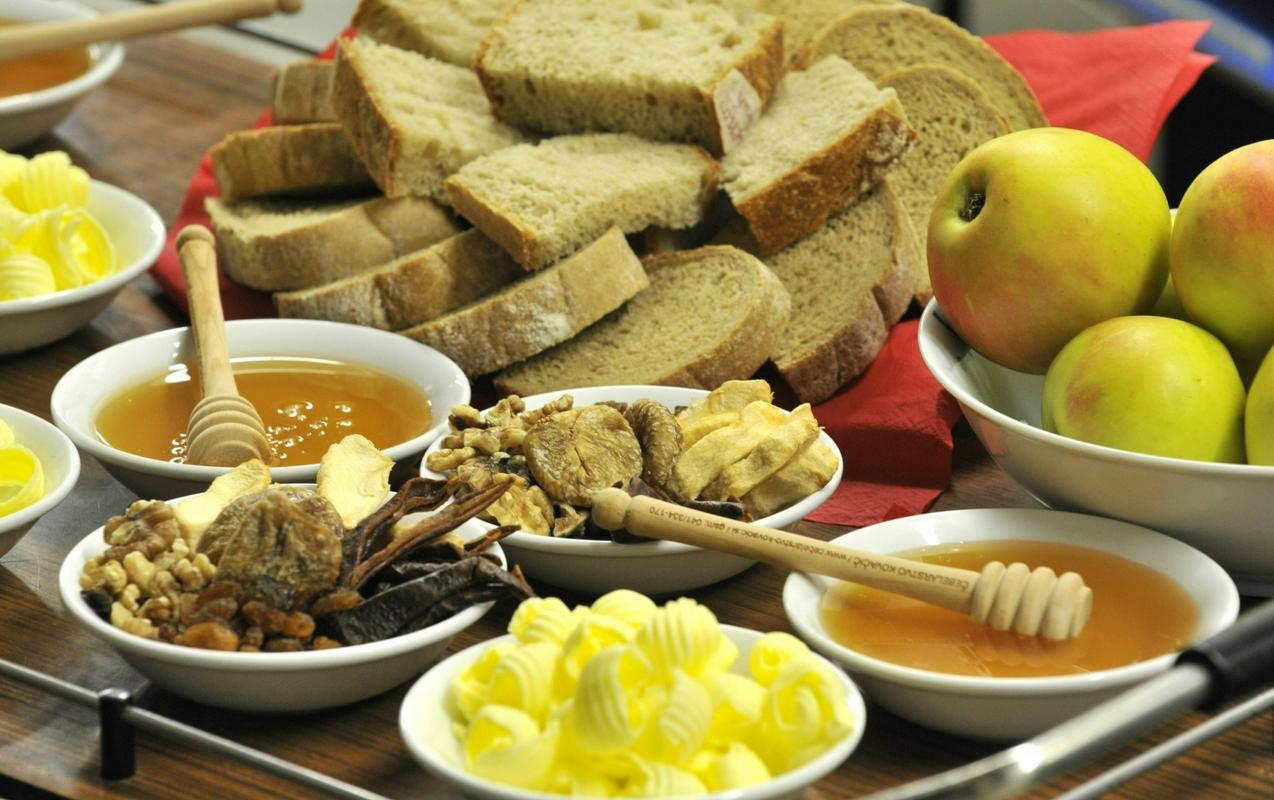
Slovene Food Day, observed the third Friday in November, includes a traditional Slovene breakfast, served in kindergartens, schools and parliament. On the table were bread and butter with honey, apples and milk, all of which looked and smelled very appetising. Even though this is just the kind of food we like to think of as homemade and traditional, our self-efficiency with them is not so good.
On Tuesday, the Statistical Office of Slovenia published statistics on the production and consumption of agricultural products for 2017, which show ‘especially low levels of self-sufficiency in 2017 regarding fresh fruit (21%), vegetables (39%), honey (45%) and potatoes (50%).’ This means that only 21% of fruit and only 45% of honey in our market is of Slovene origin. Self-efficiency in butter dropped the most dramatically between 2004 and 2016. It had been at 193% in 2004, down to only 52% in 2016. We have been 50% self-sufficient in wheat for the last 15 years and we are doing the best with milk, which we export. In 2016, self-sufficiency rate in fresh milk was 176% in 2016.
For quality food, we need quality soil
The focus of this year's Slovene Food Day was the importance of healthy soil for food production. ‘Not only is quality important in Slovenia, but it is also important to have sufficient land for food production in general. We need to ensure we have land for food production, because this reduces transport costs and ecological footprint, resulting in increased sustainability and food safety.’ This was the answer of Blaž Repe from the Geography Department at the Ljubljana Faculty of Arts to the question of whether in Slovenia we have enough land for food production.
Repe stressed that the quality of the soil itself is also important, as it determines the quality of the food we consume. ‘We can say that the rule is: from the soil directly into the mouth.’ Repe pointed out that some pollutants are very mobile, being transferred into the foods people consume: ‘This ranges from protection products, fertilisers to some heavy metals etc.’
High quality and safe soil is more thankful also from an economic perspective, as it requires considerably lower input, lower protection products, fertilisers, energy, agrotechnical measures and it also results in improved yields, Repe pointed out. However, looking in the short-term, higher yields can be produced with the use of a variety of additives. Such food is cheap, but also of poor quality. Repe is convinced that ‘good food is always expensive.’
Slovenia is not easy terrain for food production
This is the reason why special attention must be paid to how the soil is treated, if we want to eat high quality food. ‘That is why land of high quality should be made available. Do we have enough of it? Not at all. Slovenia is mainly hilly and mountainous, there is too little land optimal for agriculture, even less for farming. Farming cannot be justified in 80% of the country, because we are one of the countries with the largest forested area. We have the Karst area, where there is a lack of surface water which is needed for agriculture. Slovenia will always have to import the majority of its food. But we should carefully maintain what we do have, areas where we can produce something.
And healthy and quality food should be grown there.’
In answer to the question whether we do enough to protect fertile soil, Repe stated that we are certainly too little aware of this problem and our actual awareness of this problem is insufficient. ‘When it’s a choice between capital and land protection, we know which will draw the short straw.’

































































